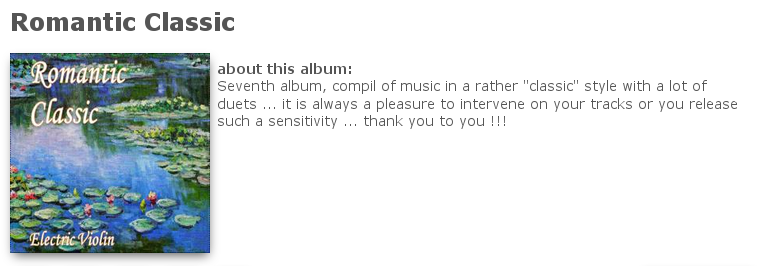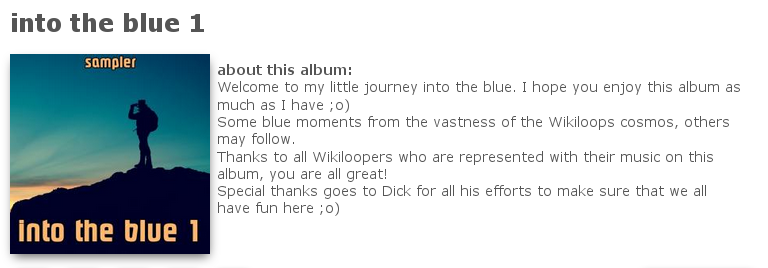I made a video of my last remix of this track, just to show music production in Ardour on Linux:
Thanks for watching.

Music. Photography. Thoughts.
I made a video of my last remix of this track, just to show music production in Ardour on Linux:
Thanks for watching.
Shi uploaded her version of Arnosolo’s lovely tune, and I instantly tried, and yes my bass from yesterday fits as well – so here’s the combination of us:
That makes the list of musicians on this track:

I’ve had two other remixes on my track, and a remix of one of those remixes as well – so in case you want to hear those, just go to my track (click here to go there), and have a listen.
Maybe (and hopefully) more will follow…
Thanks for listening.
An awesome track again from Arnosolo, and a very nice and intelligent lesson in composition. So I couldn’t resist to add some low notes (and some 10s for colour) to it:
Musicians so far:

Thanks for listening.
I took another photo of Tuna, “our” cat today, like almost every day. She sat in a box and just looked too cute to be ignored. And tho I tried to get a sharp photo with ISO 800 first, it was too dark, and I always had a bit of movement from her – so I used ISO 6400 instead.
In the past this resulted in more or less borderline quality – good enough for small images on web pages or even for postcard-sized prints, but that was about it. Now? I’m amazed about how and/or what they did to the imaging process at Olympus, because if you treat the images with their own “Olympus Viewer 3” raw converter which does the same as the camera would, then even with the noise reduction switched completely off it now still results in very impressive photos.
I won’t stop there of course, and still treat the images with other programs afterwards, because in many if not most cases I prefer a black & white image to a colour one – but Mitchie is the complete opposite of me here, and to just show what can be achieved “in camera” (or with no further manipulation in OV3 which is the same), I’ll show you the originals here, both in colour and also in (in-camera) black & white:
As I just wrote above, I won’t stop there. The least I’d do to any black & white photo is to use my “midtoning” in RawTherapee, which, when applied to the b&w photo from above, would look like this:
I find that nicer than just accepting the grey tones; I strongly prefer these more brownish ones.
But as nice as the in-camera black & white images from Olympus cameras are already, there are certain programs which are dedicated to the task of black & white conversions which offer many more options than Olympus Viewer or any in-camera conversions could. One of them which is (was) free is Silver Efex Pro 2 from the former Google and former Nik companies (now this belongs to DxOMark IIRC).
With Silver Efex Pro 2 I often use just one of their many great presets, and the one I often like most is the “019 Fine Art Process” one, which brings out a lot of fine detail in those grey (and later toned) tones, and just refines photos, for lack of a better word. I also like the “Type 14” simple white border of SFX (Silver Efex Pro 2). Together with my usual midtoning in RawTherapee, the image of the cat would become this:
This is a very nice result already in my opinion, and again I’m amazed at how clean an image with ISO 6400 from a Micro Four Thirds camera can be these days.
But “clean” isn’t always my preferred goal – I used to develop black & white films myself when I was younger, and enlarge those negatives in our parents’ bathroom. And as I’ve written a few days ago, my most used films when I was younger mostly were either Kodak Ektachrome 400 colour slides, or Ilford HP5+ (ISO 400) or FP4+ (ISO 125) black & white ones (together with also using Ilford paper in most cases).
And of course modern programs try to simulate the look of films like these, even RawTherapee now has this. But SFX has a really nice simulation of Ilford’s HP5+, and together with the other treatments mentioned above, the photo would look like this:
Way more contrasty and harder (tho you could manipulate that as well), and more gritty than all photos above – this would be my favourite by far. The image may look grainy in your small browser windows (or even on mobile phones?), but this would still make a very nice 30x40cm (about 12″x16″) print. So in that regard, quality wise, I have arrived and made peace with digital. This last one I would sign and hang into a gallery if anyone on earth would be willing to pay for just viewing it 😉
To you, as always, thanks for reading and for viewing.
Edit, from a few hours later:
And just because Mitchie likes colour photos much more than single coloured ones, here’s a simulated colour slide from a Kodak Ektachrome 400 film, colour made with Color Efex Pro 4, and image border and exposure number made with The Gimp (“filmstrip” effect):
Thanks again for viewing.
Since I’ve got my new camera (as a replacement for my old one) almost two weeks ago, I use it on Tuna the cat on an almost daily basis. And one photo from the first day was even “explored” in Flickr, but this isn’t my main motivation. It’s just that cats don’t have to pose, in fact their natural behaviour is what makes them so photogenic and so cute.
So here is photo number 140 from my new camera, with a simulated Ilford HP5+ black & white film look (and white border) again, midtoned as usual:
And as always, thanks for viewing.
Thanks for viewing.
This is a good video, explaining what the title says – the basics, and why they’re important:
So if you’re into making videos using your cameras (and maybe even microphones), watch this – recommended stuff.
Enjoy…
Wonderful little punk rock piece from adu, Lenny Cowler, and gwailoah – couldn’t resist to play some straight 8th beat onto it:
List of musicians:

Thanks for listening!
Both Zuleikha and me were included in the albums of other musicians on Wikiloops lately. A bit over a week ago, “Jypeka” included Zuleikha’s “You stood by” in his album “Romantic Classic“:

You can listen to the included track here as well:
And I was included in Uloysius’ album “Into the blue 1” with a remix from “ArkRockStudio” of “I’m not Quite Ready for That”:

And you can listen to that track here as well if you like to:
So if you’re interested in classical violin music or in a nice Blues sampler, consider to listen to the whole albums on Wikiloops for free, or download them with printable covers if you want them as physical media.
Thanks for reading and/or for listening.
Today I mounted my beauty dish with a grid in front of it onto the studio strobe which is quasi permanently placed at a corner of our dining table.
I didn’t have a model to sit there, and I also don’t have a remote for this camera (gave my “smart” phone to a relative lately who can make better use of it than I can). So I decided to put my camera on a tripod, and to take a photo of it using Mitchie’s camera again. And this is the result in front of a black background:
The lens you see is the 50mm/1.4 “standard” lens from my film camera, the OM-2n. And on Mitchie’s camera I had the 50mm macro lens from my E-520 DSLR. Reflected in the lens you see the 20″ beauty dish which lit the scene.
As always, thanks for viewing.